[ad_1]
The information is present and up-to-date in accordance with the newest veterinarian analysis.
Cat possession might very properly be tons of simpler if our pets might inform us their ideas. Nevertheless, till any particular person develops a cat-to-human translator, now we’ve got now to make the most of context clues and our pet’s physique language to decipher their moods.
A cat’s tail is among the many many most expressive components of their physique. So, in case your cat’s tail is twitching, you’re in all probability questioning what they’re pondering. Sadly, a quivering tail can point out many alternative factors, so that you just’ll ought to put in your pondering cap to go looking out out what’s occurring.
From the joys of working in course of their attempting expertise to the frustration of aggravating conditions, there are various potential causes in your cat’s tail twitching. Be taught on to be taught additional so likelihood is you will start to raised perceive your cat’s temper and the driving forces behind this conduct.


The 6 Causes Why Cats Twitch Their Tails
1. They’re Attempting
Cats will normally twitch their tails on account of they’re attempting or having enjoyable with. This occurs after they’re centered intensely on their prey, whether or not or not or not it’s a real-life mouse or a fluffy one you merely purchased from Amazon.
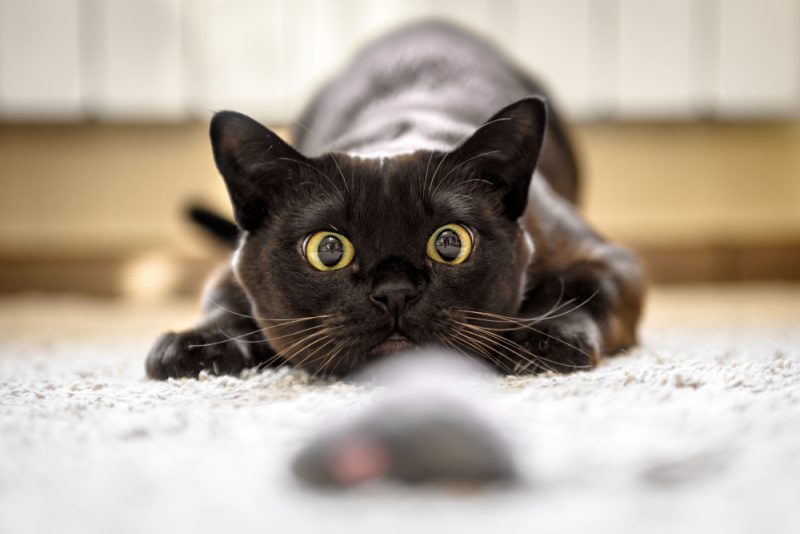
2. They’re Excited
When youngsters are blissful and excited, they typically bounce up and down as a solution to launch their pent-up vitality and categorical their enthusiasm. Our cats don’t have the an an identical potential to level their happiness, so a quivering tail may mark anticipation and pleasure.
3. They’re Irritated
When your cat twitches the tip of their tail strongly forwards and backwards, it could be that they’re mildly irritated or pissed off. This may presumably be a warning signal that your pet isn’t keen on one issue you’ve been doing, nonetheless they’re not fairly on the extent nonetheless the place they’re going to take the subsequent step and act on their annoyance.
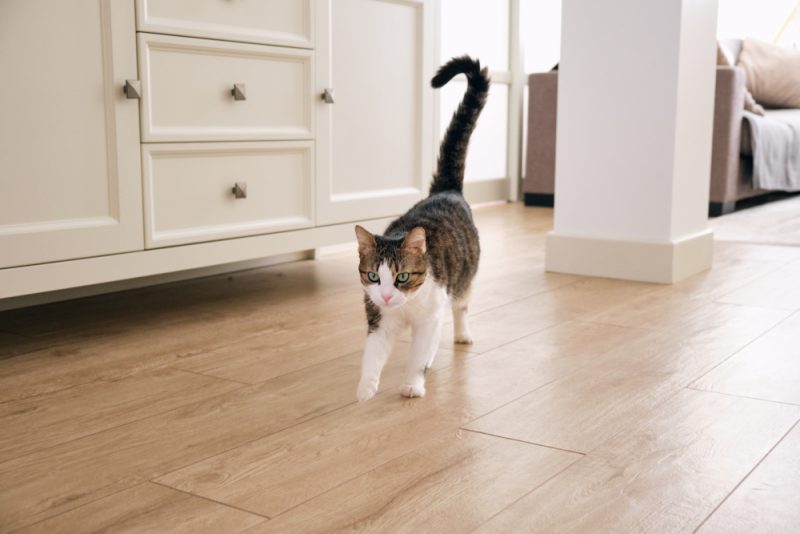
4. They’re Feeling Aggressive
Tail twitching is commonly furthermore related to aggression. The extra your pet’s tail strikes forwards and backwards, the so much a lot much less blissful they could very properly be. Speedy tail actions can point out they’re issuing a hazard to you or one totally different pet all through the dwelling. You may additionally see completely totally different aggressive behaviors, much like growling or hissing. Their tails may additionally thwack audibly on the underside or shut by partitions.
5. They’re Spraying
You acknowledge your cat is spraying after they arrive up, maintain their tail straight up all through the air, and put their rear finish in course of a function (e.g., partitions, bedding, curtains, and so forth.). Their tail will possibly be quivering, they typically’ll spray urine onto an object.
Spraying is most really to happen in cats which have reached sexual maturity, and it will presumably happen in each female and male cats. It occurs most constantly in intact ladies and men in warmth, although these which have been spayed or neutered may spray.
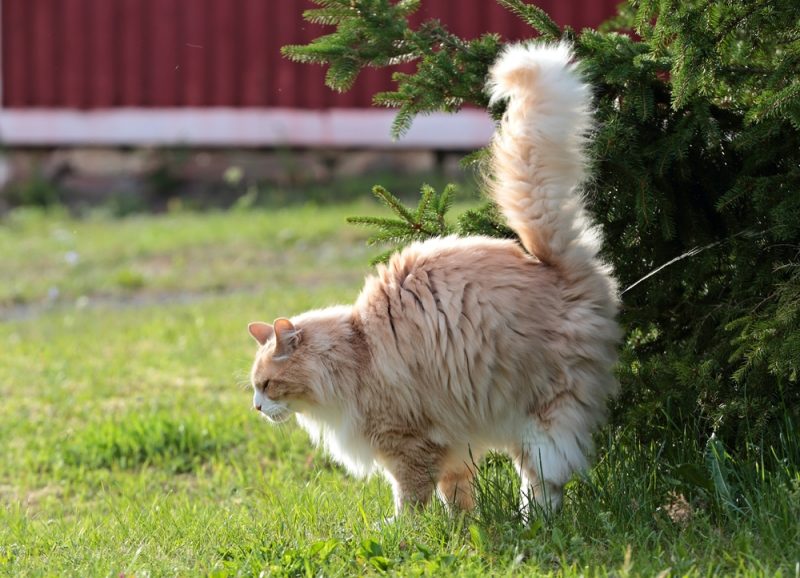
6. They Have Feline Hyperesthesia Syndrome
Feline hyperesthesia syndrome (FHS)—usually typically referred to as “twitchy cat syndrome”—is a weird state of affairs that causes elevated sensitivity to the contact and uncontrollable muscle contractions. FHS is poorly understood, and its root set off continues to be unknown, although it’s most constantly attributed to neurological, psychological, or dermatological causes. Ahead of it may very well be acknowledged, completely totally different situations that set off related indicators must be dominated out.
Cats with this instance might quiver their tail, nonetheless they’ll typically exhibit completely totally different indicators, together with:
- Rippling or twitching of pores and pores and pores and skin on the as soon as extra
- Biting or licking themselves (significantly all through the as soon as extra, aspect, and rear areas)
- Ache or discomfort when petted
- Dilated pupils
- Transient bursts of working
- Tail chasing


How Can I Know Why My Cat’s Tail Is Twitching?
With so many causes in your cat’s tail twitching, it will presumably really actually really feel not potential to go looking out out what your cat is feeling. Nevertheless, it’s really comparatively easy for people who cease and ponder your conduct and your kitty’s present atmosphere.
Take into consideration what your kitty is presently doing, their physique language, and what’s occurring spherical them to go looking out out the precise motive in your pet’s tail twitching.
For instance, a cat that your toddler is tormenting is unlikely to be twitching their tail out of enjoyment, considerably if their ears are pulled as soon as extra they typically’re staring your baby down. It’s further in all probability on this instance that your cat is feeling irritated and ready to strike.
Likewise, for people who’re utilizing your cat’s favourite toy to play with them, it’s unlikely they’re twitching their tail on account of they’re spraying or feeling aggressive.
Consulting with a vet is a wonderful methodology to assist arrange environmental or behavioral elements if you want some further help.
💛 😺 Converse To a Vet On-line From the Consolation of Your Sofa!
Whether or not it’s advisable to talk with a vet nonetheless can’t get to in any case one, head over to PangoVet. It’s an web primarily based service the place likelihood is you will talk to a vet on-line and get the personalised recommendation you want in your pet — all at an inexpensive worth!
What Else Your Cat’s Tail Can Inform You
Cats exhibit completely totally different tail postures other than twitching on account of it’s one amongst many few methods they’ll convey their temper and focus on with completely totally different cats and different individuals.
| Query mark tail | Good, playful |
| Puffy tail | Afraid, defensive, or aggressive |
| Low tail | Unease or concern |
| Tucked beneath: | Fearful or anxious |
| Straight up: | Assured, blissful, good |
| Wagging: | Offended, pissed off |
| Sluggish swish: | Centered, doubtlessly attempting |
| Fast thrashing: | Irritated, uncertainty |
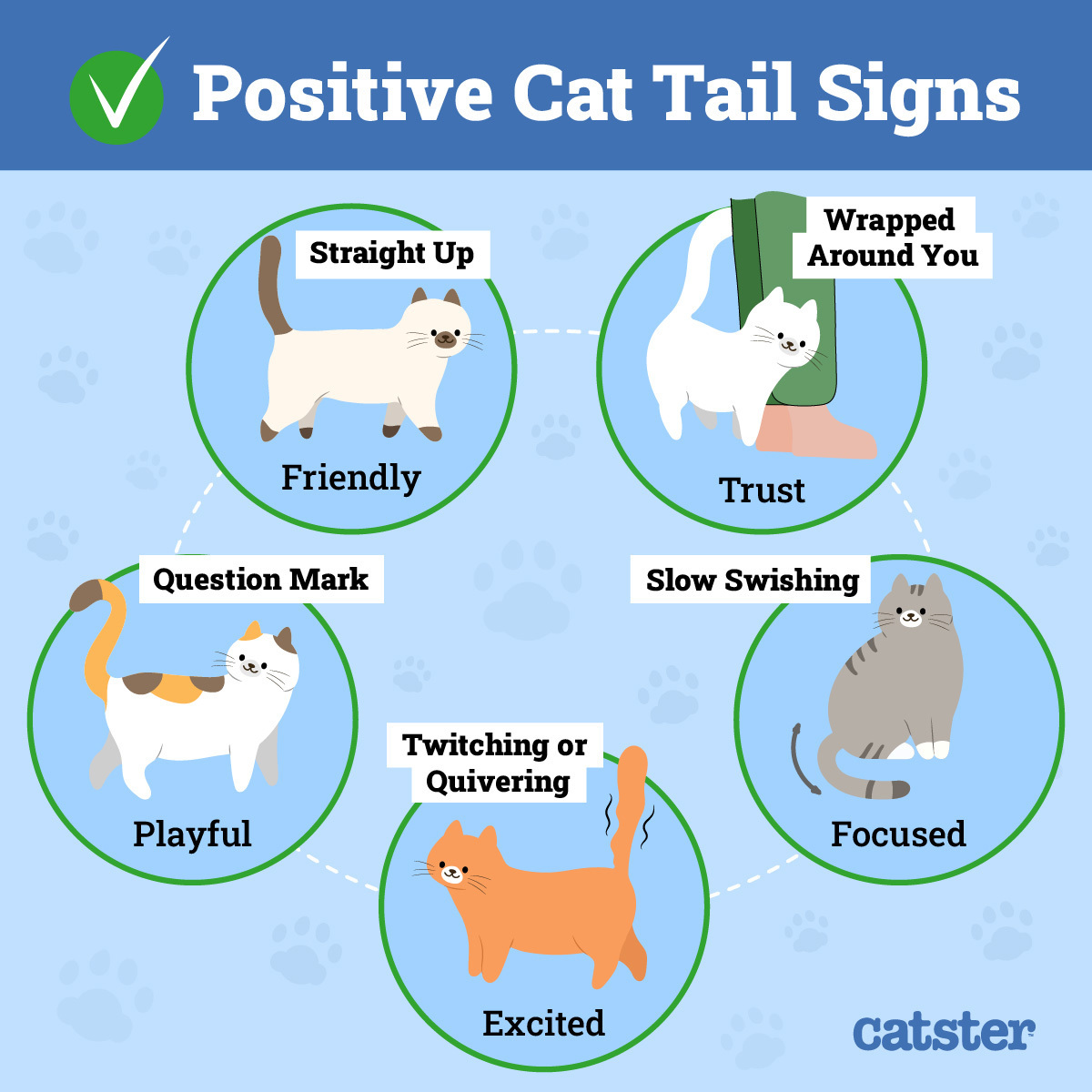
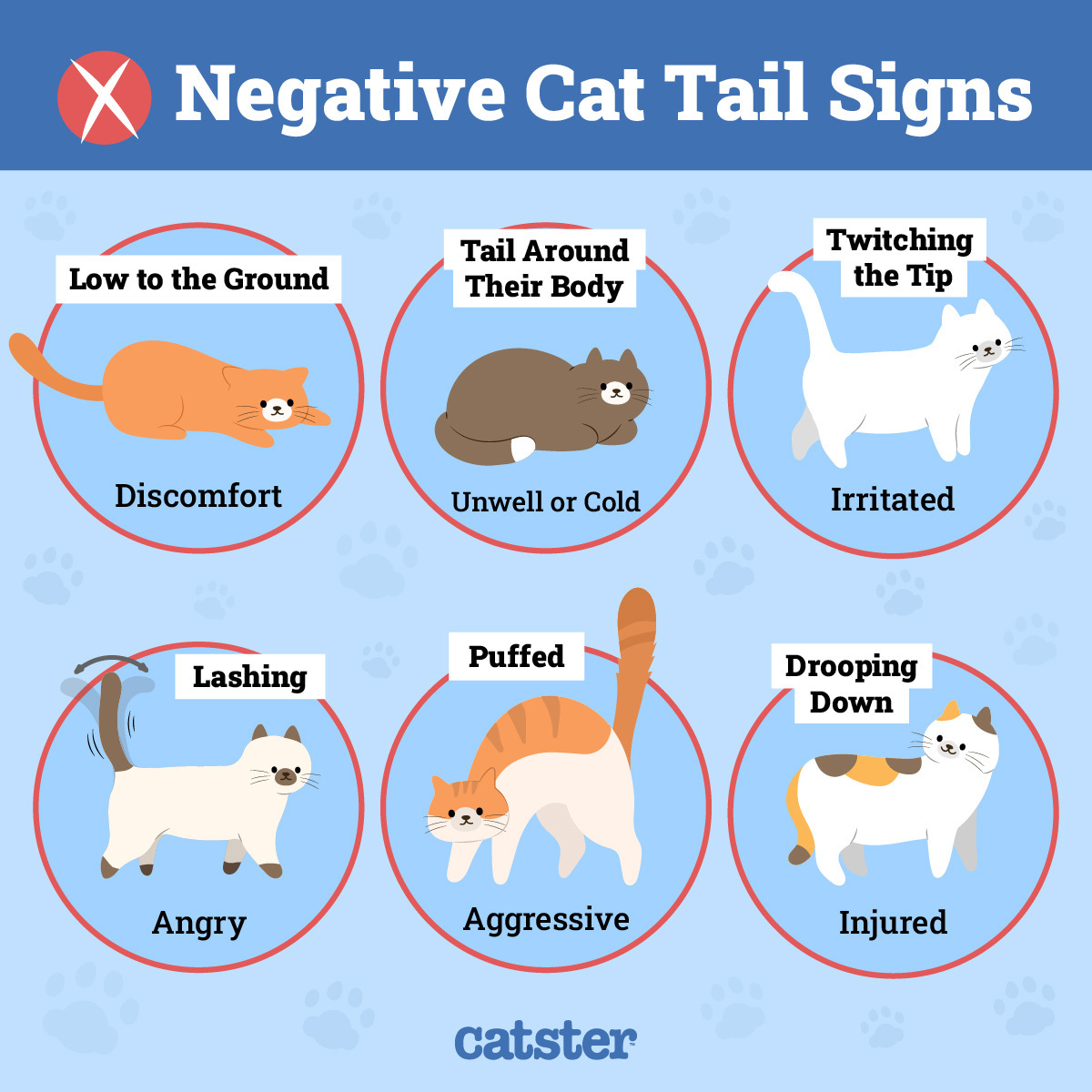
How Else Do Cats Convey Temper?
Cats don’t solely use their tails to convey their temper. Fully totally different delicate (and on no account so delicate) physique language cues embody:
- Facial expressions. The methods your cat strikes their eyes, ears, and mouth can degree out their temper. Cats feeling relaxed may need widespread eye and ear positioning, whereas these feeling indignant may need erect ears and narrowed eyes. Cats with flattened ears and dilated pupils can be fearful.
- Eye contact. How tons eye contact your cat is holding can allow you to understand how relaxed or confrontational they’re feeling. These sluggish blinking with a relaxed stare may very well actually really feel comfy and composed, whereas these staring with out blinking can be troublesome you.
- Posture. Cats exhibiting the elemental black cat Halloween pose with an arched as soon as extra and bottle brush tail are feeling aggressive or defensive, whereas these stretched out with their bellies up are relaxed and comfy.
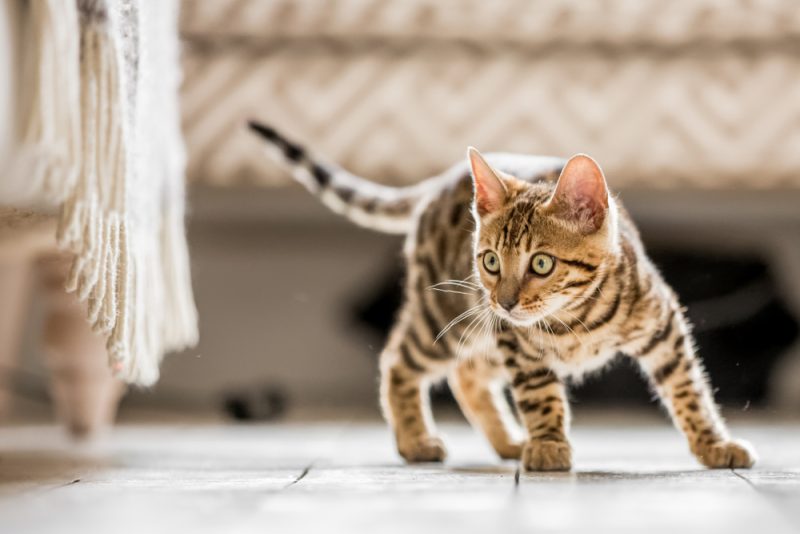


Ultimate Ideas
As chances are you’ll even see, a cat’s tail twitches can point out a lot of factors. It’ll be laborious to go looking out out the precise motive behind your pet’s tail actions with out furthermore making an allowance for their physique language and context clues from their atmosphere. Nevertheless, when you ponder what else is happening in your cat’s world and easy methods to check their physique language, you’ll be an expert in your pet’s moods and emotions.
Featured Picture Credit score rating ranking: olivier.laurent.images, Shutterstock
[ad_2]
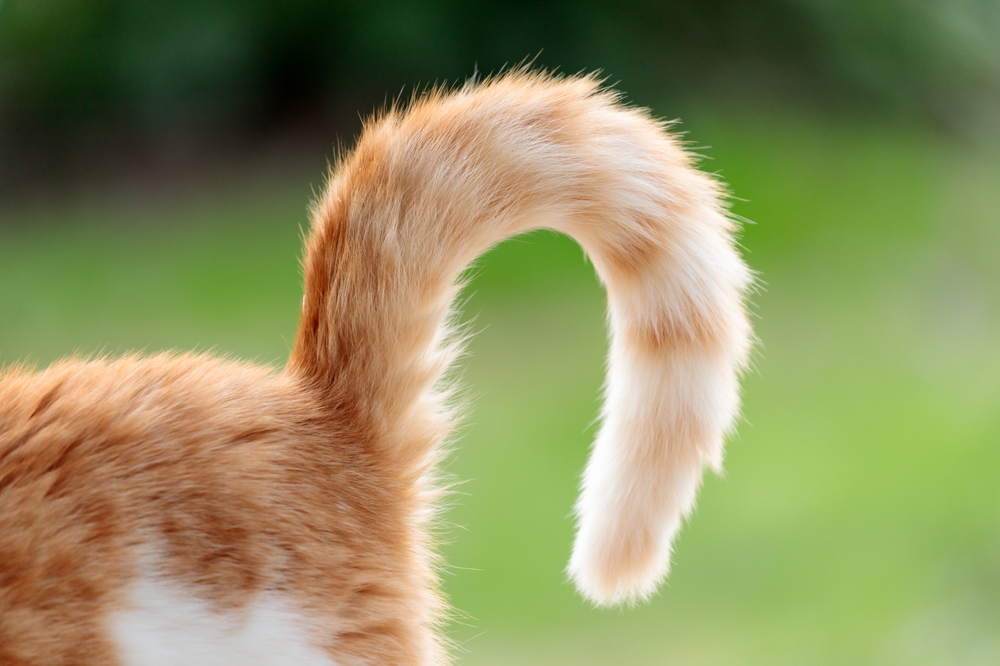
I found the section on feline hyperesthesia syndrome particularly interesting. It’s important for cat owners to be aware of such conditions, as they can affect how we interpret our cat’s behavior and reactions.
The insights on how different tail movements indicate various moods are useful for any cat owner. It’s a reminder that observing our pets closely can enhance our understanding of their emotional states.
Overall, this article does a great job of breaking down complex behaviors into understandable concepts. Recognizing signs of irritation or aggression is crucial for ensuring a harmonious environment between pets and people.
I appreciate the detailed explanation of why cats twitch their tails. This information might help prevent misunderstandings between cats and their owners, which could lead to better care and a happier pet.
This article provides a thorough overview of the reasons behind tail twitching in cats. Understanding these behaviors can significantly improve our relationships with our pets and help us respond appropriately to their needs.